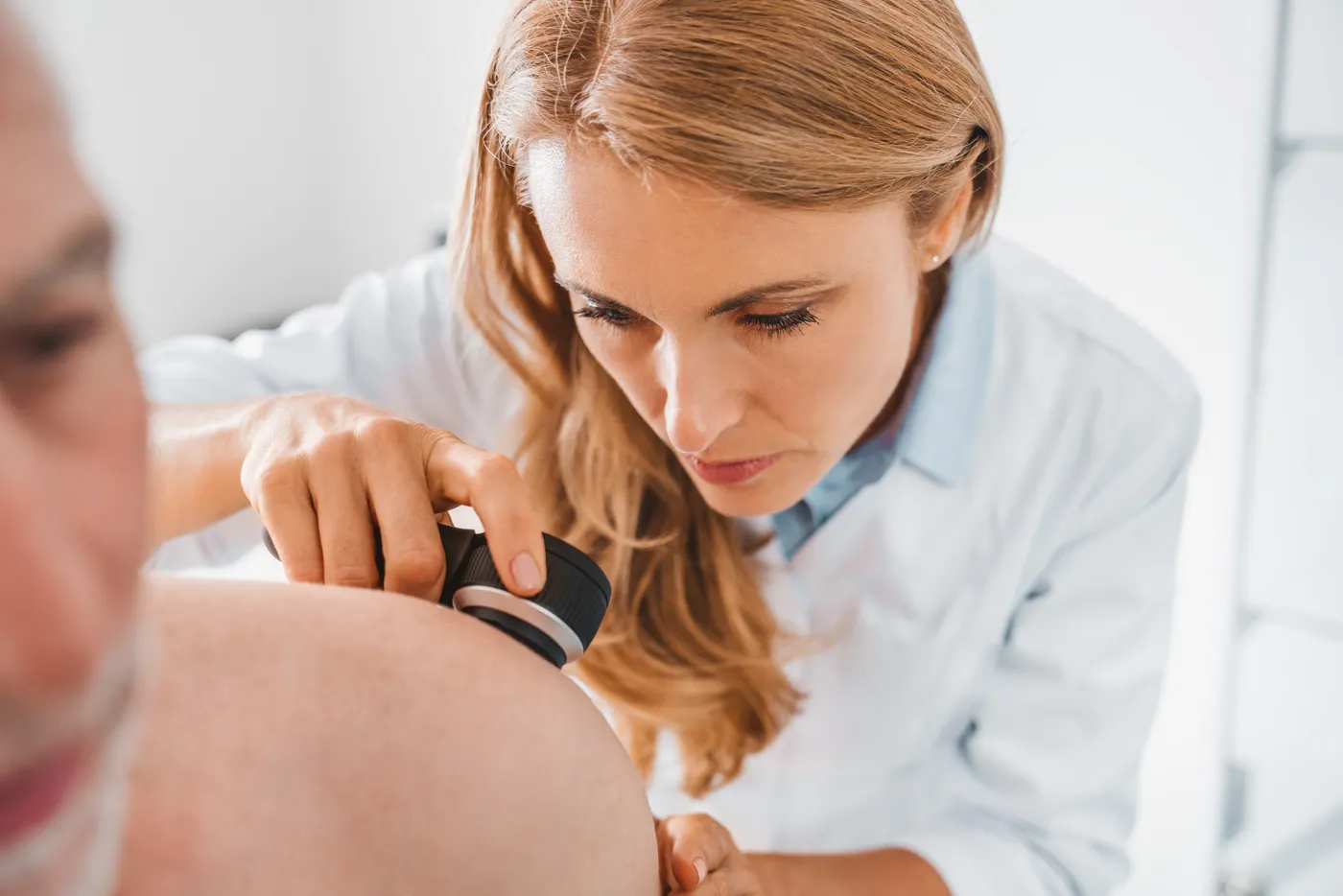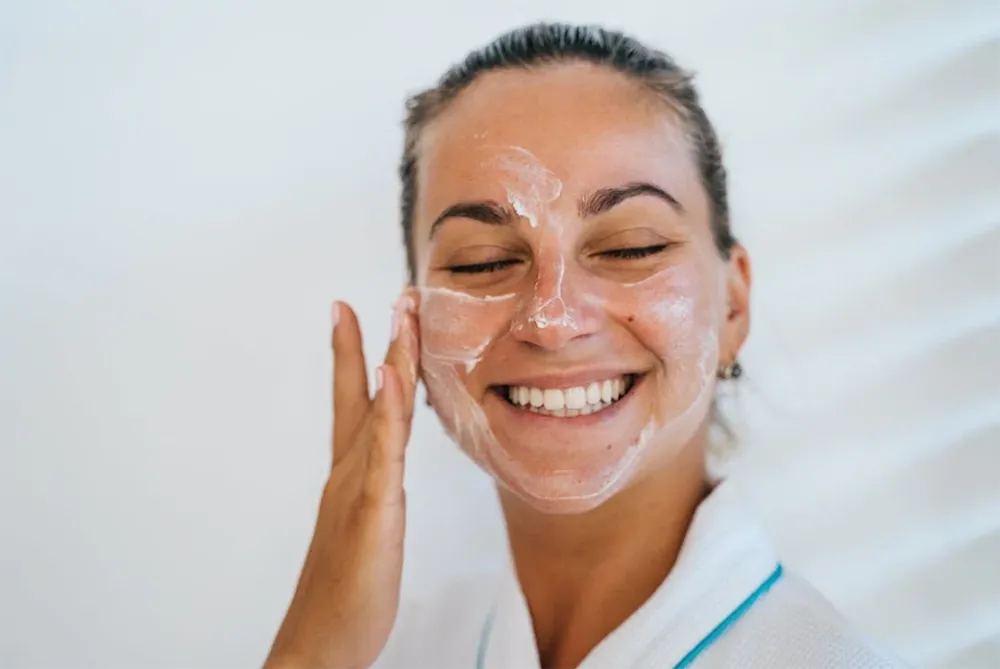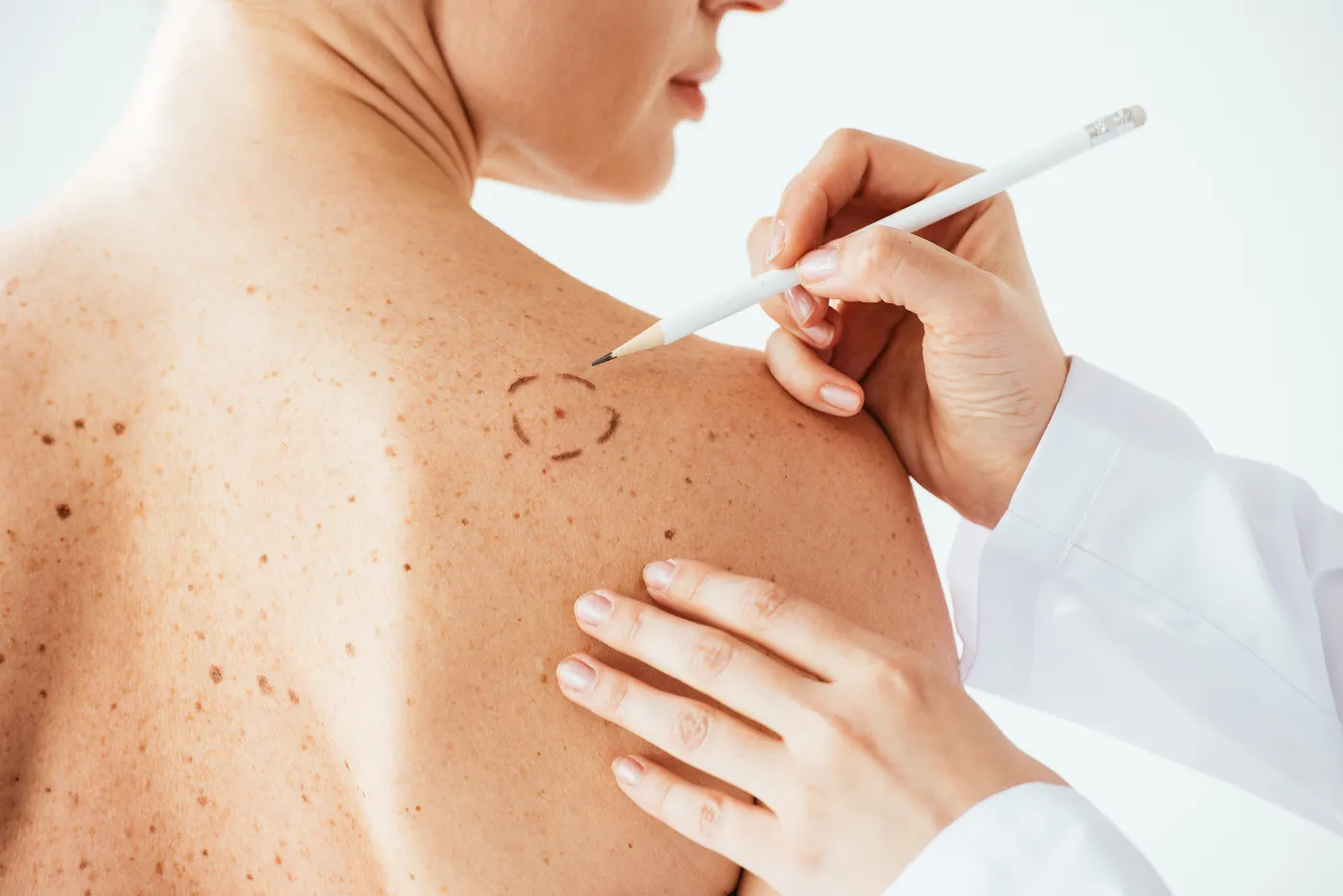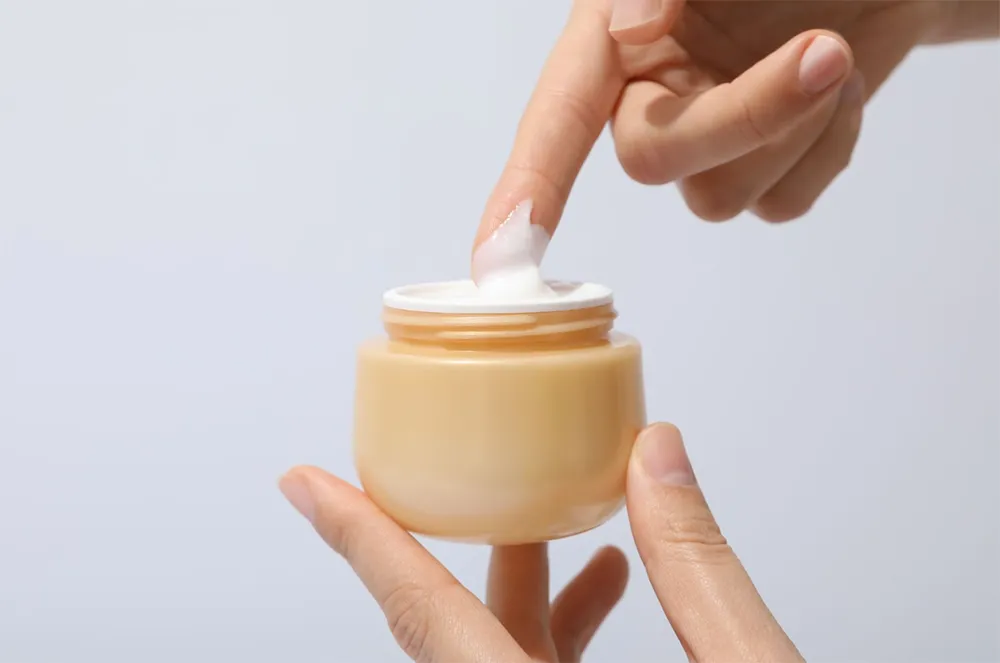Mole Removal 101: How to Know When It’s Time to See a Dermatologist
Moles are a common part of our skin, appearing as small, pigmented spots that most people develop over time. While the majority of moles are harmless, some changes—such as shifts in size, color, or texture—can indicate a need for professional evaluation. Knowing when to monitor a mole and when to seek a dermatologist’s advice is key to maintaining skin health.
In this guide, we’ll walk you through the signs that a mole may need removal, the difference between cosmetic and medical mole removal, and what to expect if you decide to have a mole checked by a dermatologist.
What Are Moles and Why Do They Appear?
Moles are small clusters of pigmented skin cells that develop on the skin’s surface. They can vary in color, shape, and size—ranging from light brown to dark black, flat or raised, and smooth or rough in texture. While some moles are present at birth, most develop over time due to a combination of genetic and environmental factors.
Below are a few factors that contribute to mole formation:
- Genetics: Moles often run in families, meaning if your relatives have many moles, you may too.
- Sun Exposure: UV radiation can trigger the development of new moles and darken existing ones.
- Hormonal Changes: Periods of hormonal fluctuation—such as puberty, pregnancy, or menopause—can cause moles to appear or change in appearance.
While most moles remain stable throughout life, it’s important to monitor any new or changing moles. Sudden changes in size, color, or shape may signal the need for a professional evaluation to ensure your skin stays healthy.
Signs That a Mole May Need Removal
Most moles are harmless, but certain changes can indicate a need for professional evaluation. One of the easiest ways to assess whether a mole may require removal is by using the ABCDE Rule:
- Asymmetry – One half of the mole doesn’t match the other.
- Border – The edges are irregular, ragged, or blurred.
- Color – The mole has multiple colors or uneven shading.
- Diameter – Larger than 6mm (about the size of a pencil eraser).
- Evolving – Any noticeable change in size, shape, color, or texture.
Beyond the ABCDE Rule, other signs may indicate that a mole should be evaluated by a dermatologist:
- Itching, bleeding, or crusting – A mole that becomes irritated, scabs over, or bleeds without injury should be checked.
- Rapid growth or sudden changes – A mole that appears quickly or starts changing rapidly is a red flag.
- Problematic location – Moles in areas prone to constant friction or irritation, such as under bra straps, waistbands, or on the scalp, may be candidates for removal, even if they are benign.
If you notice any of these signs, it’s best to schedule an appointment with a dermatologist. Early evaluation can help determine whether removal is necessary for health, comfort, or peace of mind.
What to Expect During a Mole Removal Procedure
If a dermatologist determines that a mole should be removed—whether for medical or cosmetic reasons—the procedure is typically quick, minimally invasive, and performed in-office.
Depending on the mole’s size, depth, and location, a dermatologist may recommend one of the following removal methods:
- Shave Excision – A thin blade is used to carefully shave the mole off at the skin’s surface. This method is commonly used for small, raised moles and requires little to no downtime.
- Surgical Excision – The entire mole is cut out along with a small margin of surrounding skin, then stitched closed. This method is typically used for deeper moles or those requiring biopsy.
- Laser Removal – For certain cosmetic cases, a laser can be used to break down pigment and remove the mole without cutting the skin. However, this option is not suitable for moles that may be cancerous.
Is Mole Removal Painful?
Most mole removal procedures are done with local anesthesia, meaning you won’t feel pain during the process. Afterward, mild discomfort, redness, or swelling is common but usually resolves within a few days.
Will It Leave a Scar?
Any skin procedure carries a small risk of scarring, but dermatologists take careful steps to minimize scarring. Proper aftercare—like keeping the area clean, avoiding sun exposure, and following your provider’s instructions—can help promote smooth healing.
How Long Is the Recovery?
Downtime is minimal, and most people can return to normal activities the same day. Stitches (if used) are usually removed within one to two weeks, and the area will continue to heal over the next few weeks.
If you’re considering mole removal, a consultation with Pure Dermatology can help determine the best approach for your needs.
When to Schedule a Dermatology Appointment
Regular skin checks are an essential part of maintaining skin health, especially for individuals with a history of significant sun exposure or a family history of skin cancer. While most moles are harmless, it’s always best to have a professional evaluate any mole that looks unusual or has changed over time.
Early detection is key—catching potential concerns sooner rather than later can make a significant difference in treatment outcomes. Even if a mole turns out to be benign, having a dermatologist assess it can provide peace of mind and ensure that your skin remains healthy.
If you’ve noticed a mole that looks different or is causing discomfort, don’t ignore it—staying proactive with skin health is always the best approach.
Do You Have a Mole That Needs to Be Checked?
As we covered in the article, most moles are harmless, but some may need professional evaluation—especially if they change in size, shape, or color or start causing discomfort. By following the ABCDE rule and staying proactive with skin checks, you can help protect your skin and catch any potential concerns early.
If you have a mole that looks different or is causing irritation, it’s best to have it checked by a dermatologist. Schedule a consultation today to get expert guidance from Dr. Hill and the team at Pure Dermatology.
The Ultimate Guide to Sensitive Skin Care: Keep Your Skin Calm and Healthy
Caring for sensitive skin can often feel like walking a tightrope. One wrong move—whether it's the wrong product or an overlooked step in your routine—and your skin could react with redness, irritation, or discomfort. For those with sensitive skin, maintaining a calm, healthy complexion requires a thoughtful approach and a little extra care.
In this guide, we’ll explore essential tips and carefully chosen products designed to keep your sensitive skin happy and healthy. Whether you’re struggling with dryness, redness, or just trying to avoid flare-ups, we’ve got you covered with expert advice that will help you navigate the world of sensitive skin care with confidence.
Understanding Sensitive Skin
Sensitive skin is more than just a label—it's a common condition that affects many people, often leading to discomfort and frustration. If you have sensitive skin, you may notice that it reacts more easily to environmental factors, such as cold weather, wind, or pollution. Harsh skincare products, like those containing fragrances, alcohol, or strong acids, can also trigger redness, itching, or stinging sensations. Even stress can exacerbate sensitive skin, leading to flare-ups that are difficult to manage.
Understanding the unique needs of your skin is the first step toward effective care. Sensitive skin is typically characterized by a weakened skin barrier, which means it's less able to protect itself from irritants. This makes it crucial to understand what your skin reacts to and to choose products and treatments that are gentle, soothing, and free from common irritants.
By recognizing the signs of sensitive skin and understanding what triggers your symptoms, you can make informed decisions that help maintain your skin’s health and resilience. Next, we'll explore how to build a skincare routine to keep your sensitive skin calm, nourished, and protected.
Sensitive Skin Care Tip #1: Gentle Cleansing Routine
Cleansing is a fundamental step in any skincare routine, but for those with sensitive skin, it’s essential to approach it with extra care. The wrong cleanser can strip your skin of its natural oils, disrupt its delicate balance, and lead to irritation. That’s why using a gentle, fragrance-free cleanser is crucial to maintaining a calm and healthy complexion.
When choosing a cleanser, look for products that are specifically formulated for sensitive skin. These cleansers should be free from harsh ingredients like sulfates, alcohol, and artificial fragrances, which can aggravate your skin. Instead, opt for mild, hydrating cleansers that soothe and protect your skin barrier.
To cleanse your skin without causing irritation, follow these tips:
- Use lukewarm water: Hot water can strip your skin of its natural moisture, leading to dryness and irritation. Lukewarm water is gentle enough to cleanse without compromising your skin’s barrier.
- Be gentle with your skin: Avoid scrubbing your face with harsh washcloths or exfoliants. Instead, use your fingertips or a soft, clean towel to apply and remove the cleanser.
- Pat your skin dry: After cleansing, gently pat your skin dry with a soft, clean towel. Rubbing can cause friction and exacerbate sensitivity.
Gentle Cleansers for Sensitive Skin:
EltaMD Skincare:
- EltaMD Foaming Facial Cleanser: A gentle, self-foaming cleanser suitable for sensitive skin, formulated with enzymes and amino acids to cleanse without over-drying or irritating the skin.
Avène:
- Avène Gentle Milk Cleanser: Designed for dry and sensitive skin, this cleanser removes impurities while preserving the skin’s moisture balance.
- Avène Cleanance Cleansing Gel: While primarily for oily, acne-prone skin, it is also suitable for sensitive skin types as it's non-irritating and very gentle.
- Avène Tolerance Extremely Gentle Cleanser Lotion: Formulated specifically for very sensitive and easily irritated skin.
Alastin Skincare:
- Alastin Gentle Cleanser: A sulfate-free, gentle cleanser formulated for sensitive skin. It helps remove impurities and makeup without causing irritation.
Incorporating these products into your daily routine will help ensure that your sensitive skin remains balanced, hydrated, and free from irritation. By starting your skincare regimen with a gentle cleansing routine, you lay the foundation for healthier, more resilient skin.
Pure Dermatology carries these trusted brands. Be sure to check our website for the specific products we offer to suit your sensitive skin care needs!
Sensitive Skin Care Tip #2: Moisturizing Essentials
For those with sensitive skin, moisturizing is not just about adding hydration—it's about creating a protective barrier that shields your skin and locks in moisture. A good moisturizer plays a crucial role in keeping sensitive skin calm, smooth, and resilient.

Sensitive skin is more than just a label—it's a common condition that affects many people, often leading to discomfort and frustration. Sensitive skin is a common condition that reacts easily to environmental factors, causing discomfort and frustration. Harsh skincare products, like those containing fragrances, alcohol, or strong acids, can also trigger redness, itching, or stinging sensations. Even stress can exacerbate sensitive skin, leading to flare-ups that are difficult to manage.
Understanding the unique needs of your skin is the first step toward effective care. Sensitive skin is typically characterized by a weakened skin barrier, which means it's less able to protect itself from irritants. This makes it crucial to understand what your skin reacts to and to choose products and treatments that are gentle, soothing, and free from common irritants.
By recognizing the signs of sensitive skin and understanding what triggers your symptoms, you can make informed decisions that help maintain your skin’s health and resilience. In the next sections, we’ll explore how to build a skincare routine that supports your sensitive skin, ensuring it stays calm, nourished, and protected.
- Fragrance-free and hypoallergenic: Fragrances and harsh chemicals can irritate sensitive skin. Choose products labeled as fragrance-free and hypoallergenic to minimize the risk of a reaction.
- Non-comedogenic: Sensitive skin is often prone to breakouts, so opt for a non-comedogenic moisturizer that won’t clog pores.
- Lightweight but effective: A lightweight formula can provide the hydration your skin needs without feeling heavy or greasy.
Sensitive Skin Care Tip #3: Sun Protection
Daily sun protection is a non-negotiable step in any skincare routine and should never be overlooked! Exposure to UV rays can lead to sunburn, premature aging, and even skin cancer, but it can be particularly harsh on sensitive skin, causing redness and irritation. That’s why wearing SPF every day—rain or shine—is crucial to keeping your skin calm and protected.

For sensitive skin, mineral-based sunscreens are often the best choice. Unlike chemical sunscreens, which absorb UV rays, mineral sunscreens sit on the skin's surface and physically block them, making them less likely to cause irritation. Look for sunscreens containing zinc oxide or titanium dioxide for gentle yet effective broad-spectrum protection.
Applying sunscreen should be the final step in your morning skincare routine, but reapplying throughout the day is just as important to ensure continuous protection. Here are a few tips on how to reapply sunscreen without disturbing your skin:
- Use a mineral powder sunscreen: This option is perfect for quick touch-ups and won’t leave a greasy residue.
- Carry a travel-sized sunscreen: Opt for a lightweight, non-greasy formula that absorbs quickly for easy reapplication.
- Reapply after sweating or swimming: Sunscreen can wear off with sweat or water exposure.
By making sun protection a daily habit, you can help shield your sensitive skin from harmful UV radiation.
Sensitive Skin Care Tip #4: Choose the Right Products
For sensitive skin, selecting the right products is essential to avoid irritation. Prioritize hypoallergenic, fragrance-free, and alcohol-free options, as these are less likely to trigger reactions. Fragrances and alcohol can be especially harsh, leading to redness and dryness, so it’s best to steer clear of them if you have sensitive skin. For some of our favorite products, check out our blog post “Healthy Skin Is In.”
Also, watch out for common irritants like sulfates, parabens, and harsh exfoliants, which can easily disrupt your skin’s balance. A good rule of thumb is to choose products with simple, minimal ingredient lists—this reduces the chance of introducing something that could irritate your skin.
To minimize irritation, adopt a minimalist skincare routine. Stick to a few essentials: a gentle cleanser, a hydrating moisturizer, and a broad-spectrum sunscreen. Limiting the number of products you use makes it easier to keep your skin calm and identify any triggers that may arise.
When Should You See A Dermatologist?
A well-planned skincare routine can help, but sometimes sensitive skin and reactions can become overwhelming. If you experience persistent redness, irritation, or allergic reactions that don't improve with over-the-counter products, seek professional advice. Conditions like eczema, rosacea, or severe acne can mimic or worsen sensitive skin. Only a dermatologist can provide the accurate diagnosis and treatment needed.

Regular check-ups with Dr. Hill at Pure Dermatology are also important, even if you’re not currently facing major skin concerns. These visits allow Dr. Hill to monitor your skin’s health, adjust your skincare routine as needed, and recommend treatments tailored specifically to your skin type and concerns.
If you’re struggling with ongoing skin issues or simply want expert guidance on caring for your sensitive skin, schedule an appointment with Dr. Hill. At Pure Dermatology, we’re here to provide the personalized care and advice you need to keep your skin healthy and glowing.
Final Thoughts
Caring for sensitive skin requires a gentle and thoughtful approach, ensuring that your skin stays calm and healthy. By being mindful of your products and sticking to a consistent, minimalist routine, you can prevent irritation. Choose products designed for sensitive skin and incorporate daily sun protection to maintain a balanced complexion. Taking these proactive steps helps protect your skin and keeps it healthy.
Remember, your skin’s health is a priority. If you ever need guidance or are dealing with persistent issues, don’t hesitate to seek professional advice. Dr. Hill and the team at Pure Dermatology are here to provide the personalized care and recommendations you need to keep your skin looking and feeling its best.



